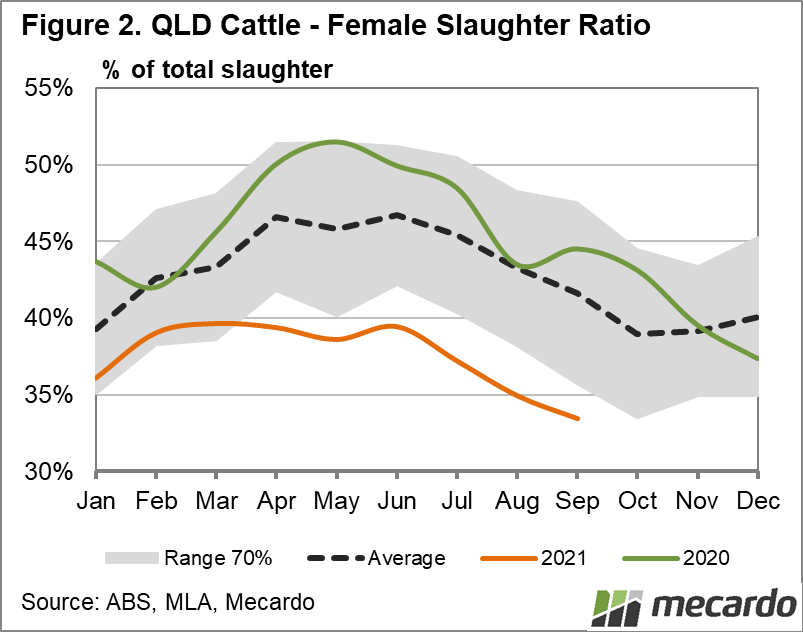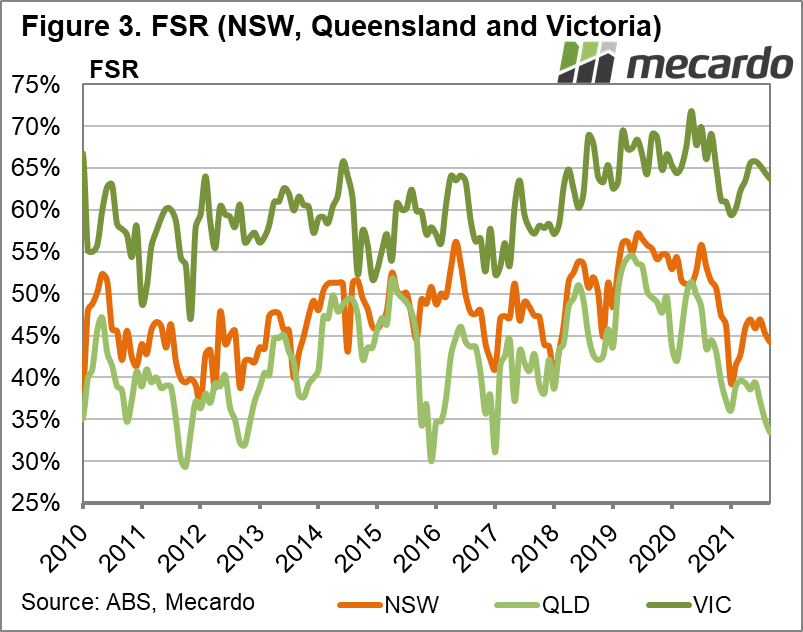The Australian cattle herd is well into “rebuild mode” and over the last quarter producers stepped it up another notch. The share of female cattle exiting the herd is the best indicator of herd growth or liquidation and the latest official data released by the ABS tells us that producers are holding onto their females very tight.
The national female slaughter ratio (FSR) came in at 44.4% for the September quarter, according to data from the Australian Bureau of Statistics (ABS). This was a decline from a FSR of 47.5% in the previous quarter.
Figure 1 applies monthly seasonality to the quarterly figures to give us an idea of how the proportion of females exiting the adult cattle herd has moved over time and shows we are well and truly at the lower end of the range. It also goes someway to explain the lift in the proportion of females slaughtered in quarter two, which followed the normal seasonal trend.
The drop in female turnoff in Queensland in quarter three catches the eye though. A FSR of 35.2% in quarter three followed an FSR of just under 40% in quarter two. This is the lowest FSR we have seen for Queensland since the drought breaking rains. We would need to go back to January 2017 to find a time with lower female turnoff as a proportion of the herd.
In NSW the FSR also declined slightly, dropping nearly 1 percentage point from quarter two. The proportional supply of females was also fairly unchanged in Victoria, where the FSR is naturally higher than other states due to the dairy herds.
What does it mean?
Females have been a scarce and valuable asset for some time now, but in this herd rebuild cycle, that has never been truer than now. Looking forward, a low female slaughter ratio will be an important factor in achieving the rates of herd rebuild growth projected by Meat & Livestock Australia (more on that later). The strength of the wet season in the North over summer will be key to the intensity of the herd rebuild, but with the water flowing around the country at the moment, there aren’t any signs of the momentum slowing.
Have any questions or comments?
Key Points
- The pace of the Australian cattle herd rebuild has intensified
- In quarter three, the female slaughter ratio declined to 44.4% nationally.
- Queensland was a large driver of this decline, indicating strong intent by producers in the state to expand their herds.
Click on figure to expand
Click on figure to expand
Click on figure to expand
Data sources: MLA, ABS, Mecardo















